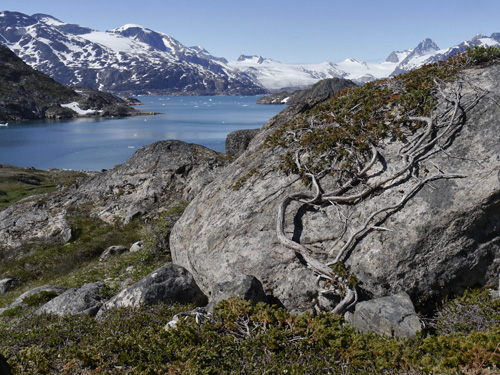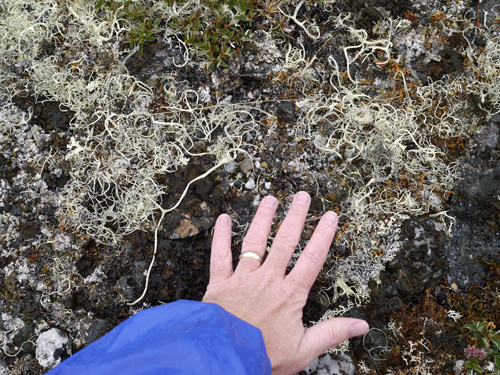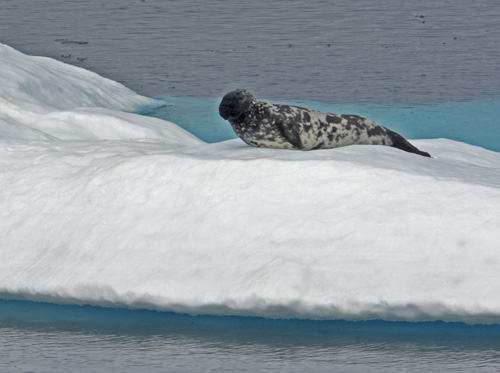
TODAY'S JOURNAL:
Greenland is known as a pretty harsh place, end even during our mid-summer visit it was evident that life clinging to the margin of land seaward of the ice shelf has very special adaptations to survive in the Arctic environment. Exposed rock was very common, sometimes with wonderfully colored lichen gardens blotching the surface and sometimes still bare from the last glacier paring down the surface just a few thousand years ago. Vegetation there grows as Arctic tundra, a fantastic miniature mix of lichens, mosses, and flowering plants seldom growing taller than a few centimeters. In well protected areas stunted versions of willows, junipers, birch, and mountain ash might get waist high, but the climate is too unforgiving to allow for any taller growth.

At first glance the icy protected waters of Greenland's extensive fjords seem even more barren, with only the occasional sea birds or seals to indicate any life at all. But the scarce birds and marine mammals belie a rich biological treasure trove underwater, protected from the harsh weather conditions above sea level. Even when wind-blown snows seal the slopes and ice paves the fjords with frozen caps for over half the year, these underwater biomes provide a stable environment that is home to a profusion of life only accessible by divers or submersibles.


Sea birds and seals have the diving part down, but for us to get a glimpse requires SCUBASelf Contained Underwater Breathing Apparatus gear or a submarine. Fortunately, the National Geographic Explorer comes equipped with both! Master diver Dennis Comejo was aboard as our Undersea Specialist and led dives at multiple moorings. He also deployed the ship's Remotely Operated Vehicle (ROV), a tethered small submarine with lights and cameras but no humans aboard. Dennis shared his findings with near-nightly video highlights at the daily recap meeting, and was kind enough to share two of his short dive films from the trip with me to pass along on my PolarTREC page. In the first we find Dennis and his team on a SCUBASelf Contained Underwater Breathing Apparatus dive in Qaqortoq fjord. The second video features ROV footage from Brattahlid. The ROV is capable of deeper dives than a SCUBASelf Contained Underwater Breathing Apparatus-equipped diver- note how the deep water environment and the life there differs from the shallower life zone. In the ROV video, the bottom sediment is very fine "rock flour", material ground from bedrock by glaciers and brought into the fjord by runoff streams and rivers where it eventually settles to the bottom. If you have questions about anything you see in either video (or about anything else, for that matter), let me know in the Ask the Team section.
http://youtu.be/wBuXUtPuMO4
http://youtu.be/u-RORl3HlVw
That's all for now! Best- Bill
- < prev
- 59 of 59


Comments